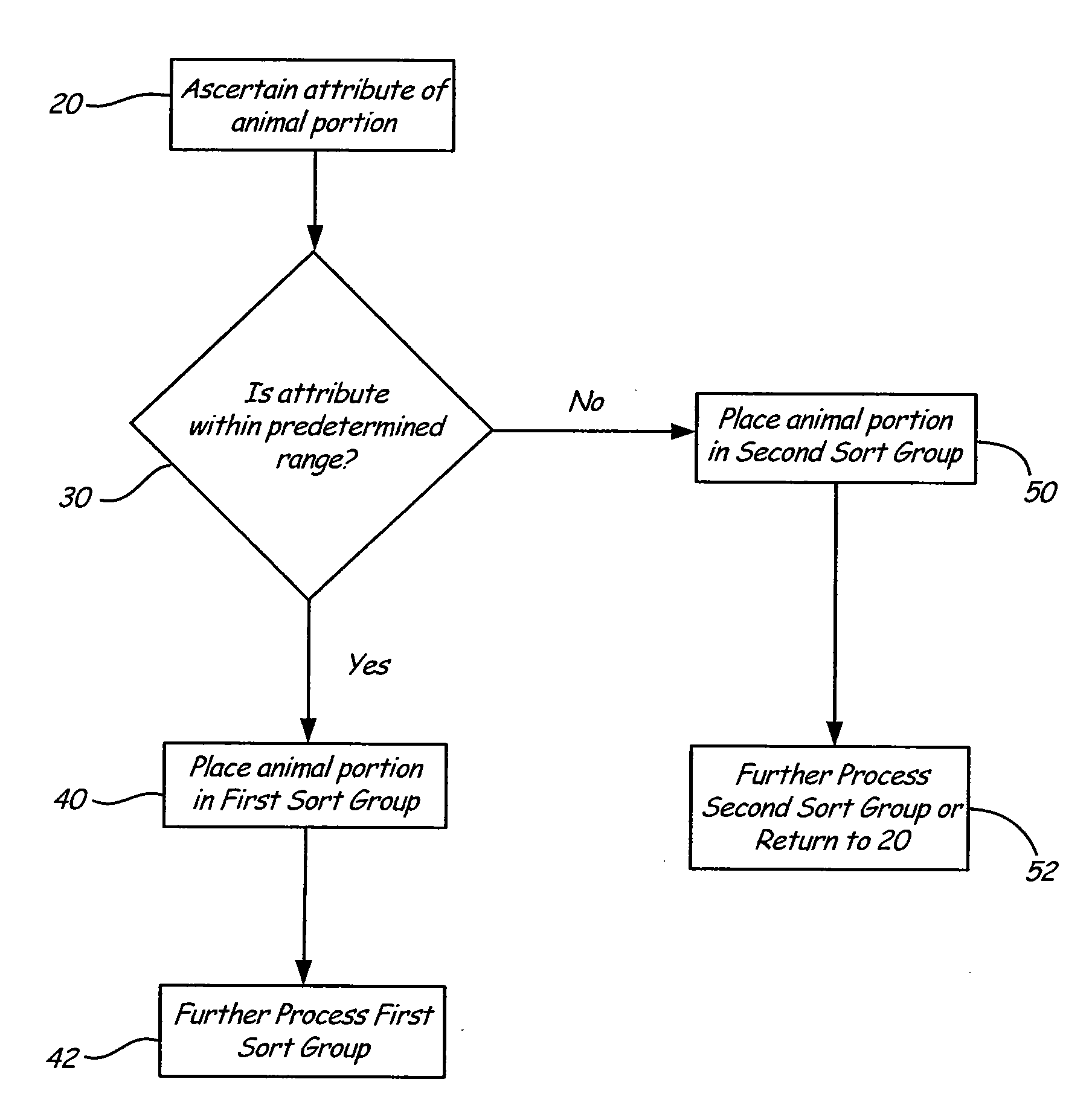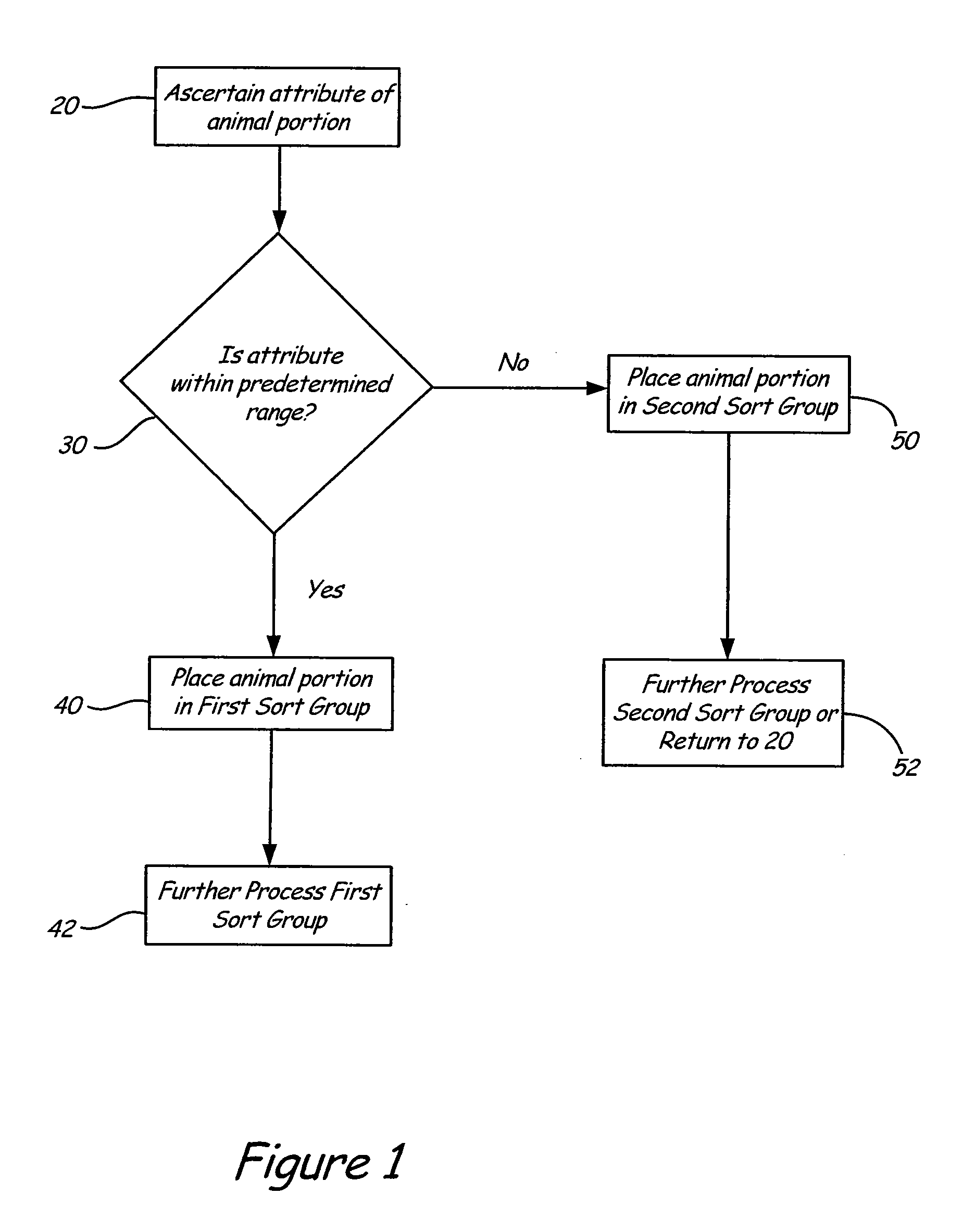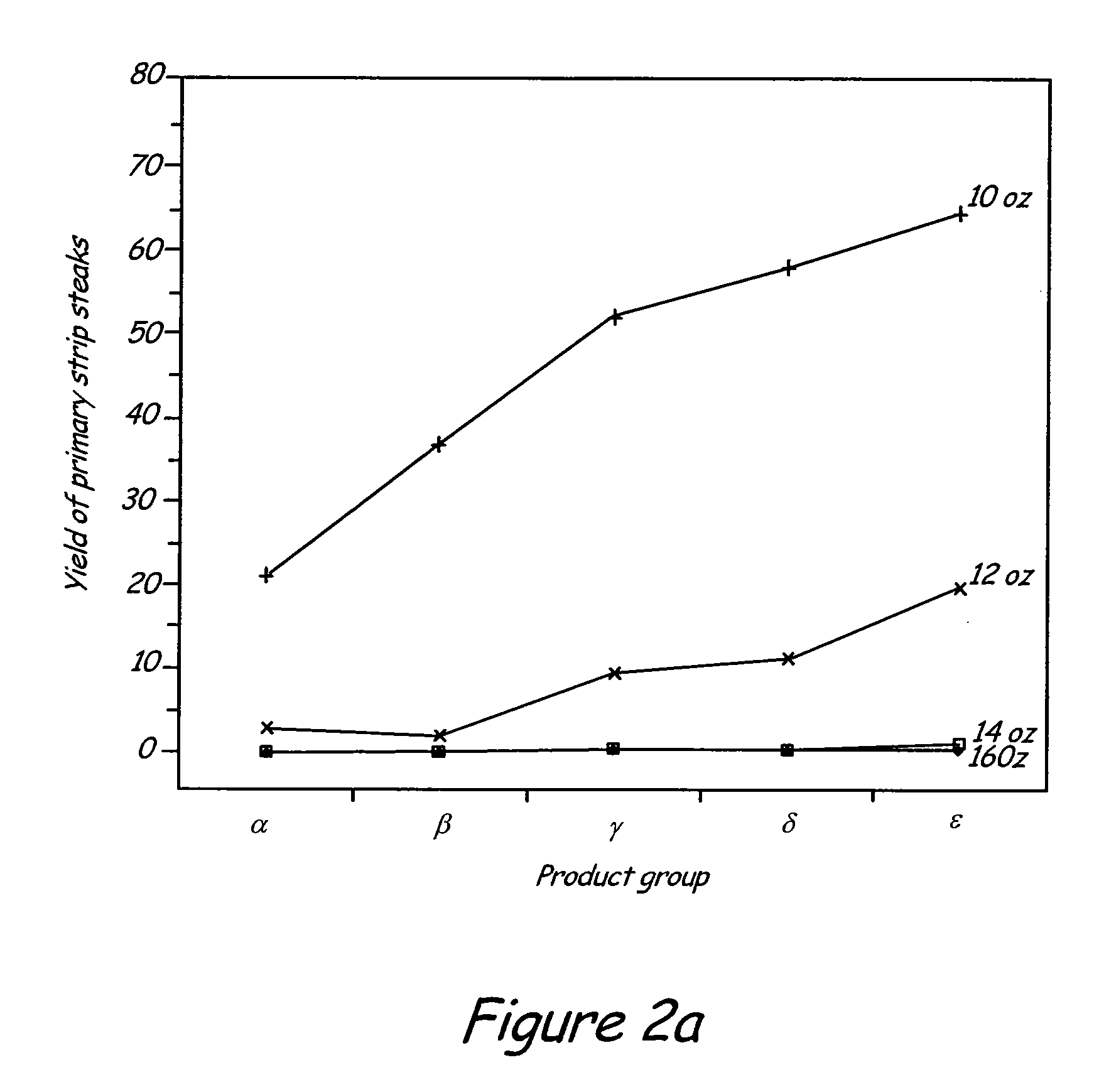Meat Sortation
a sorting system and meat technology, applied in the field of meat sorting system and method, can solve the problems of not in fact providing cuts of meat having similar characteristics, not in fact providing sorting and processing based on characteristics,
- Summary
- Abstract
- Description
- Claims
- Application Information
AI Technical Summary
Benefits of technology
Problems solved by technology
Method used
Image
Examples
example 1
[0050] The density of a 1″×041 boneless beef strip loin was calculated using a stationary manual weight scale and a laser device of a portion-control cutting machine (model X400 commercially available from Marel hf). The cutting machine was programmed to cut the strip loin according to twelve different cutting specifications (based on portion weight and the minimum thickness of primary strip steaks), i.e.: four portion size end-points (10-, 12-, 14-, or 16-oz) for the primary product (i.e. strip steaks) and two portion size end-point (6-, or 8-oz) for vein steaks for a total of eight cutting specifications, and four additional cutting specifications were programmed into the machine that looked at serially cutting the strip loin into steaks of specific thickness (0.75-, 1.00-, 1.25-, or 1.50″ thick steaks).
[0051] The same strip loin was sent through the X400 for each of the cutting specifications (i.e. 12 separate times) and the projected weight and thickness was recorded for each s...
example 2
[0052] An experiment was designed to show that different variables could be controlled through appropriate selection criteria. The endpoint was classified as 11 oz. and 14 oz. boneless beef strip loin steaks with a thickness range of greater than 1″ and less than 1.5″. A total of 40 beef strip loins were selected for the test. Specifically, 20 beef strip loins were selected to maximize the yield and uniformity of 11 oz. beef strip loin steaks and 20 beef strip loins were selected to maximize the yield and uniformity of 14 oz. beef strip loin steaks. In addition, 40 beef strip loins were collected to serve as the control product for the test. Control product was not subjected to any special selection criteria, but was chosen to represent product that is produced under the current industry practices. Beef strip loins were portioned in a commercial processing facility under normal operating conditions. Results from the test are show in Table 1. Table 1 illustrates mean steak thickness ...
PUM
 Login to View More
Login to View More Abstract
Description
Claims
Application Information
 Login to View More
Login to View More - R&D
- Intellectual Property
- Life Sciences
- Materials
- Tech Scout
- Unparalleled Data Quality
- Higher Quality Content
- 60% Fewer Hallucinations
Browse by: Latest US Patents, China's latest patents, Technical Efficacy Thesaurus, Application Domain, Technology Topic, Popular Technical Reports.
© 2025 PatSnap. All rights reserved.Legal|Privacy policy|Modern Slavery Act Transparency Statement|Sitemap|About US| Contact US: help@patsnap.com



